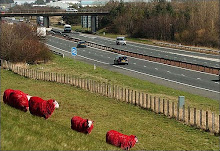By David Norton
Although modern fashions tend to avoid wool as unwieldy and conventional, Europeans from at least 1000 B.C.E. have worn this most utilitarian of fabrics. Warm, long-wearing, relatively cheap, and abundant, wool was the fabric of necessity for all Europeans, including the elites. Wool cloth came into production somewhere around 2400 B.C.E. Since then, Europeans have slowly improved the quality of wool from sheep through selective breeding, killing sheep with coarser wool for meat. Most sheep that Europeans used during the early modern period came from Italy, as was the case with Merino sheep. Long sought after for its soft fibers, merino wool originated from a Greek colony in southeastern Italy. Iberia boasted the best herds of merino sheep until well into the early eighteenth century, when other European countries began to expand their merino wool production from donated Spanish sheep.1
Like Europeans of the early modern period, historians have recognized the centrality of wool to understanding regional economies, cultures, and politics. Wool provides an ideal product for historians of differing specialties to understand the past. Social historians evaluate the herder culture of transhumance peasants. Economic historians evaluate wool as trade goods, as a foundation of the state's economy, and as a product of advances in credit. One historian has gone so far as to call wool "the dynamic core of pre-industrial urban production and long distance international trade."2 Three case studies will allow one to appreciate the centrality of wool in the early modern European world.
Any discussion of wool must begin in Italy as it is from there that Europe derives most of its modern varieties of sheep. John Marino has examined the culture and economic workings of the pastoral wool economies in the Kingdom of Naples during the early modern era. Naples possessed a transhumance organization , or royal sheep customhouse (dogana), that lobbied the monarchy for privileges. Marino disputes the accepted history of transhumance in Naples that highlights the crown as a pro-capitalist, anti-small-shepherd institution. In contrast, due to a wide variety of cultural and political ties, the crown of Naples protected s mall shepherds, at times to the detriment of economic development of the region. This study underscores the way in which wool was embedded in both peasant and elite values.3
From Italy we turn our attention to Spain, the jewel of wool production in this period. Spain produced the best and the most wool during the early modern period, forbidding the export of its merino sheep until the early eighteenth century. (The first sizable export of merinos went to Sweden in 1723.) Carla and William Phillips provide a long-overdue corrective study of transhumance herding in Spain in their book Spain's Golden Fleece: Wool Production and the Wool Trade from the Middle Ages to the Nineteenth Century. Contrary to previous scholarship, transhumance herding did not undercut agricultural productivity. Rather, transhumance herding complimented agriculture, utilizing land unusable for farming. The Spanish version of the dogana, the Mesta, has long been vilified as the institution that damned Spain to crawl towards industrialization by monopolizing productive land. According to the Phillips', clearly this was not the case. Though the dispute is far more complicated than can be addressed here, one should note that wool production proved central not just as a sector in the Spanish economy, but as a factor in industrialization and, therefore, in the politics of nineteenth and twentieth century Europe.4
Finally, consider the environmental implications of transhumance flocks in the Mexican context. Elinor Melville has written extensively on the introduction of sheep to the Valle de Mezquital area in New Spain during the sixteenth century. Following a sharp drop in agricultural productivity, Spaniards introduced sheep to the area in the 1540s. The valley subsequently became increasingly barren and ecologically unstable. Nevertheless, most economic historians agree that the Spanish "acted in their best long-term interest" when they introduced large flocks of sheep to central Mexico. Melville, by contrast, says that significant evidence contradicts this theory and that most Spaniards gave little to no thought to the long-term ramifications of transhumance grazing.5 This case study highlights the long-term environmental consequences that wool production has had on Spanish Mexico.
These three studies highlight various levels of historical materiality. Wool production radically shaped the cultures, national development, and ecosystems of the areas it touched. Perhaps no product in this period allows for such a multi-disciplinary analysis of disparate issues. Fernand Braudel displayed his usual perceptiveness when he highlighted s heep as a force that changed the world.6
http://bell.lib.umn.edu/Products/wool.html

No comments:
Post a Comment